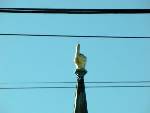 In searching for articles to post on the Burma News Ladder
In searching for articles to post on the Burma News LadderI discovered this piece of a few years ago, which had been reposted on the blog linked below. Such an expose on the Mekong River further illustrates Burma's place as a lynchpin of China's foriegn policy. What is more I found yet another thread to the tapestry of commerce covering the people of Burma.
By Lynne O’Donnell
01/06/2004
Since colonising Tibet in 1959, China has ripped out virgin forests, dug up minerals and metals, and dumped nuclear waste with little regard for the fragile ecology of the Tibetan plateau. To date, warnings from Tibetans and their advocates abroad about the damage caused by half a century of unchecked exploitation have so far been largely unheeded by the international community, but the latest stage of China’s development is set to end the silence the Chinese Communist Party has interpreted as global approval for its quest for wealth and power.
There’s not much left in Qinghai these days. Gone are the roaming herds of Tibetan antelope, white-lipped deer, Mongolian gazelle, wild oxen and donkeys. Deep craters scar the earth, which is no longer a lush carpet of grass and wildflowers. Few birds wing across the deep blue sky and any water that is left in the mostly dried-up river beds is black and deadly. There are hardly any people here, apart from a few poachers on motorcycles who slaughter the remnants of the once- great herds of Tibetan antelope, or chiru, for the fine fur that makes illegal shahtoosh shawls for the graceful necks of the fashionable demi-monde. Springs that used to refresh nomads and their herds of sheep, goats, yaks and horses have disappeared, grassland has been replaced by rocky desert, mountainsides have collapsed and the surface of the arid earth is pockmarked with abandoned excavation sites.
Indeed, large swathes of Qinghai, which have been part of China’s far south- west since an armed invasion in 1959, look like the moon. This is the obscene legacy of China’s modern gold rush on one of the most sensitive and important environments on earth – the Tibetan plateau, where 10 of the great rivers of Asia begin their journey through 11 countries. Those rivers – Mekong, Indus, Brahmaputra, Salween, Karnali, Sutlej, Arun, Manas, Yangtse and Yellow – provide water for more than 85 per cent of Asia’s people and almost 50 per cent of the world’s population. The Dalai Lama said in a speech marking the turn of the millennium, ‘Thus, the health of Tibet’s environment is not an inconsequential regional issue; it has a huge global significance warranting international attention.’
Please Read More Here






























